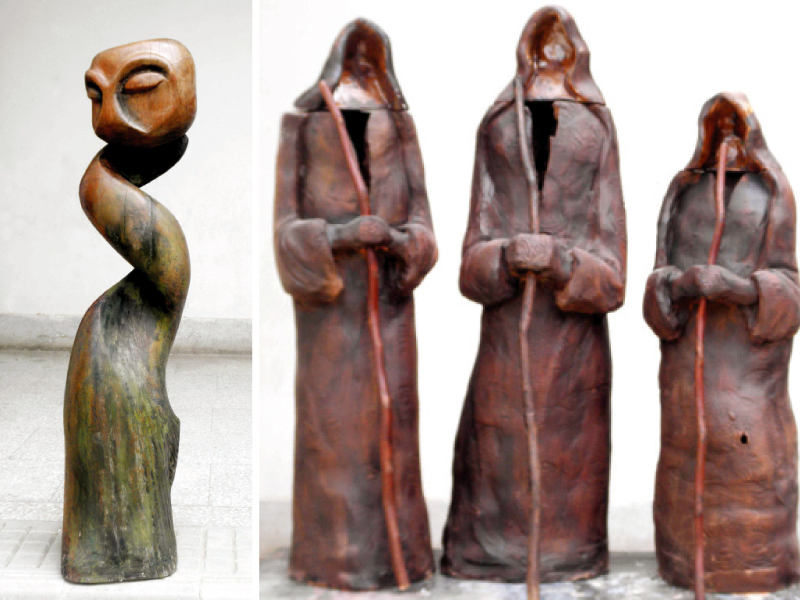
Art comes in different forms and expressions and on Saturday, the Unicorn Gallery was host to the diverse works of four artists who are faculty members of the Jamshoro University.
The CEAD Jamshoro Faculty show has been curated by Saniya Naz, who said that the work on display was “pure and without influence.” The exhibition will run at the gallery till September 7.
Hussain Chandio’s paintings looked at the lives of fishermen through different colours. “My artwork has tried to capture the daily lives of fishermen in an intricate manner,” he told The Express Tribune. “The fishermen fight many wars - their basic jihad [struggle] is for their stomach and I have tried to capture how they sail through their difficulties.”
Another artist, Manzoor Solangi, used the role of women in the society as inspiration. “It is generally perceived that women are not equally represented in our society while the truth is that women play more roles of leadership and are shoulder-to-shoulder with men in every endeavour,” Solangi said, while explaining his paintings which try to capture the essence of an Indus woman through large eyes and postures of boldness. He has also used indigenous plants, such as Aak, and the colours brown, yellow and gray, to symbolise the landscape and its people.

poverty and hunger, Jirga practice. PHOTO: COURTESY: UNICORN GALLERY
Jam Depar’s displayed his sculptures of wood and clay in the exhibition. His works, he said, were merely a product of his imagination and held no particular message. “I use clay every morning to explore my innermost creativity and then the piece takes one form or the other on its own,” said Depar, adding that his sculpture Twist depicts how human life is uncertain and has many twists in it.

Jamshoro University Fine Art department’s head, Nusrat Raza Mangi, also indulged in the art of sculpture-making. His pieces, unlike Depar’s, were meant to convey a message.
The most interesting of his paintings was the one with the three hooded-women with walking canes, which Saniya Naz called “The three wise women”. Solangi, however, said that he does not name his art work as it limits their interpretation.
With regard to his piece on a jirga, Mangi felt strongly that people, no mater of which community or status, should not have the power to make crucial decisions which impact others’ lives.
One of his pieces, which connected two people/giants, was meant to convey the pitiful nature of politicians who cared less about the people and were actually united but pretended to have rifts publicly to fool people. His fourth piece depicted poverty and hunger of the people whose plates were empty.
Naz told The Express Tribune that she appreciated the talented artists who had been in the field for so many years, yet the recognition they received was not enough. For her, the works were “one-of-a-kind.”
Published in The Express Tribune, September 2nd, 2013.





1725254039-0/Untitled-design-(24)1725254039-0-270x192.webp)
1732449527-0/Express-Tribune-(4)1732449527-0-270x192.webp)
1732441230-0/BeFunk_§_]__-(49)1732441230-0.jpg)


1732436825-0/BeFunk_§_]__-(47)1732436825-0.jpg)






COMMENTS
Comments are moderated and generally will be posted if they are on-topic and not abusive.
For more information, please see our Comments FAQ